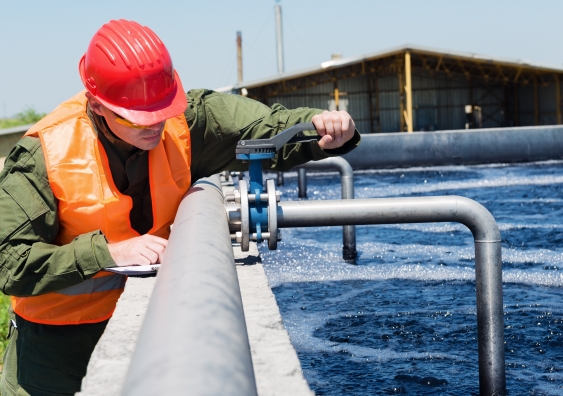Graphene could reduce odour and corrosion in wastewater network
UNSW researchers are collaborating with Sewer Venting and Crane Hire Services (SVSR) to look at the potential for graphene oxide to be applied to wastewater collection networks.
UNSW researchers are collaborating with Sewer Venting and Crane Hire Services (SVSR) to look at the potential for graphene oxide to be applied to wastewater collection networks.

Lucy Carroll
UNSW External Communications
9385 8732, 0402 005 319
l.carroll@unsw.edu.au
A team of UNSW Sydney researchers is collaborating with Sewer Venting and Crane Hire Services (SVSR) to examine a new method for controlling odours in wastewater collection networks.
In a series of world-first experiments led by the graphene team of UNSW’s School of Materials Science and Engineering, SVSR will be examining the potential for graphene oxide, the ‘super desiccant’ carbon-based material, to be applied to sewer systems throughout Australia.
The material was developed by a team led by Dr Rakesh Joshi, who has studied the way graphene can control moisture in applications as diverse as electronics, packaging and air conditioning.
“This is a stable new material that shows significant gains in adsorption capacity over conventional desiccants,” Dr Joshi says.
The researchers say the ability to fine-tune the spaces between the layers of graphene oxide as desired will allow the development of customised desiccants to control moisture across multiple applications.
The new desiccant can also discharge moisture at energy-saving low temperatures, enabling it to be easily used over and over again.
By contrast, the heating required to regenerate conventional desiccants is often considered prohibitively expensive.
“This combination of high adsorption capacity and a rapid rate of adsorption can significantly increase the efficiency of any desiccant system,” Dr Joshi says.
“Likewise, the relatively low temperatures at which discharge can be achieved offers significant advantages by greatly reducing the energy intensity required for regeneration.”
"We are very excited to look at a more sustainable alternative and we believe graphene oxide has enormous potential." - Duncan Reynolds
Duncan Reynolds, Research and Development Manager for SVSR, says the goal of the collaboration is to develop Australian-made materials and designs which can be retro-fitted to existing wastewater infrastructure throughout NSW.
“The bonus is that if we reduce nuisance odours, we will also reduce corrosion throughout the network, which reduces costs for utilities trying to manage ageing concrete sewer networks,” Reynolds says.
“It’s a win for the community, the utility and the environment.”
Graphene oxide presents a significant advantage over alternative dessicants and filter media currently in use, Reynolds says.
“Odour control media is currently not re-used, since it is prohibitively expensive to do so,” he says. “Most filter media is imported and landfilled when it is consumed.
“We are very excited to look at a more sustainable alternative and we believe graphene oxide has enormous potential.”
The project, part of AusIndustry’s Innovation Connections Program, will run until July 2019.
It is also the flagship Project for SVSR’s Internship Program and is part of SVSR’s ongoing commitment to partner with UNSW and their student body to develop innovative solutions to real-world problems.